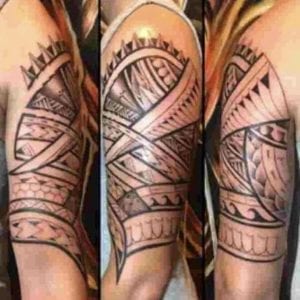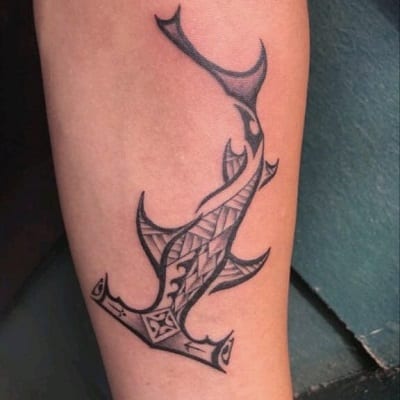“Your necklace may break, the fau tree may burst, but my tattooing is indestructible. It is an everlasting gem that you will take into your grave.”
A Verse from a traditional tattoo artist’s song

Polynesian tattoo history dates back over 2000 years, and it’s as varied and diverse as the people who wear them. Polynesian ink art originated way back from the initial days of the Polynesian, Maori, and Samoan civilizations in the South Pacific. The foundation of the English word ‘tattoo’, in fact, came from the Tahitian word ‘tatau’, which goes as far back as 1500 BC.
Heavenly Gift
All across Polynesia, there are a lot of stories that narrate the origin of tattoos. Their primary belief is that the tattoos are a gift from heaven above to humankind. According to Tahitian legend, the sons of the supreme creator ‘Ta’aroa’, were the first to adorn their bodies with tattoos. His sons, in turn, taught this intricate ink art to the men who admired this new type of expression. It’s also a tradition in Samoa’s culture, which has been unbroken for over two thousand years, where they honor the next generation with their skills; a custom that often travels from father to son.
Historically, there was no writing in Polynesian culture. Tattoo art was mainly comprised of unique and intricate signs and designs to express character, identity, and personality. Almost everyone in Polynesian culture was tattooed, which was distinctive and specified their hierarchy status in society, sexual maturity, and genealogy.
Arrival of Ink Art in Europe

History suggests that the European explorers, along with Spanish navigator Alvaro de Mendana de Neira, in 1595, were the first to visit the Marquesas Islands of the Polynesian islands. However, due to the lack of vast, valuable resources, the European navigators showed no interest in the region.
Captain James Cook was the first navigator to try to explore the Polynesian triangle. The word ‘tattoo’ appeared in Europe, in 1771, after Captain James Cook returned to Tahiti and New Zealand from his maiden voyage. In the journals of James Cook, on his voyages of discovery, he narrated the behavior and customs of Polynesian people, where he mentioned that they mark their bodies with patterns, which he termed as tattaw. In his journal he said:
“I shall now mention how they mark themselves indelibly, their humor or disposition so marks each of them”.
From his voyage, he also brought a Tahitian man named Ma’i to Europe. Ma’i’s ink art was quite intriguing and fascinated the Europeans. So this new custom, from that moment onwards, started gaining rapid popularity all across the region mainly because of Ma’i’s tattoos.
According to another tale, this custom spread so quickly across Europe because European sailors were so mesmerized by this strange and beautiful norm that they inscribed their bodies with these tattoos.
Loss and Revival
The arrival of Western missionaries on distant Pacific shores in the 19th century diminished that unique art, which was termed unholy, barbaric, and inhumane in Christian religious beliefs. The new arriving faith had a huge impact on the native divine and spiritual beliefs. The custom, which was once spread in Polynesian societies across the Pacific Ocean, was almost wiped out due to the ban imposed.
Some of the Tahitian tribes tried to lead resistance to preserve their ancient tradition, known as ‘tattoo rebellion,’ from the early to mid-19th century, in order to regain their independence, sovereignty, and spiritual roots.
In the 1970s and 80s, when it was on the verge of being banished from the world, Polynesian tattoo art experienced a rebirth. By then, most of the ancient patterns and designs had lost their meaning in the chaos. People tried to revive it by using the knowledge acquired by a few German and American scientists. Due to the lack of authenticity from the native people, the meaning and sense were altered and lost forever.
Even though the real practice of Polynesian tattooing has existed for more than 2000 years, the procedure was strictly prohibited in the 18th century. In 1986, the Ministry of Health banned tattooing in French Polynesia mainly because sterilizing the wooden and bone instruments used to make tattoos was very difficult.
Still, this culture holds a lot of meaning and spiritual value among its people. Their tattoos give significance to their lives and symbolize their journey in this world. Their ancestors carried out this ancient artistic ritual for centuries, and then they carried this heritage beyond the horizon to distant shores, where it still thrives.



